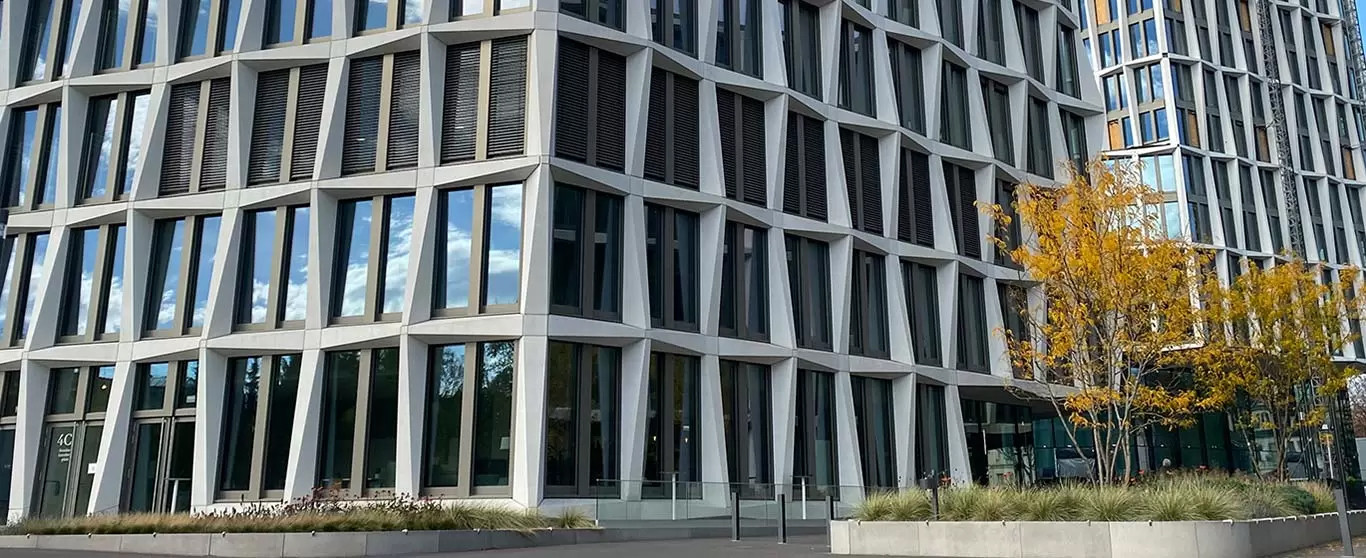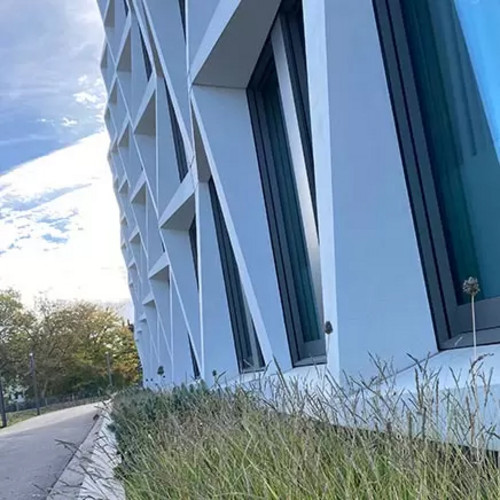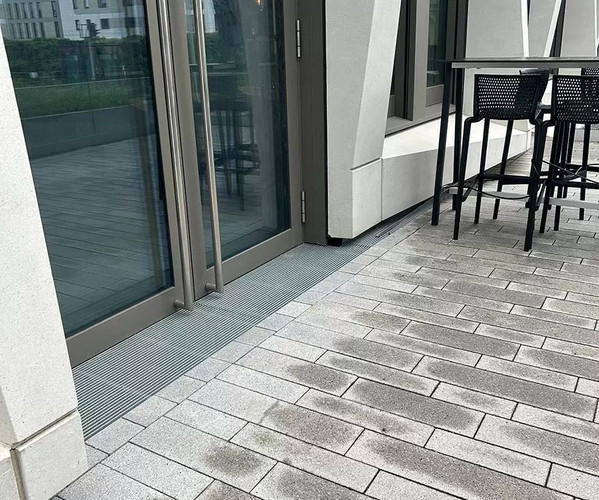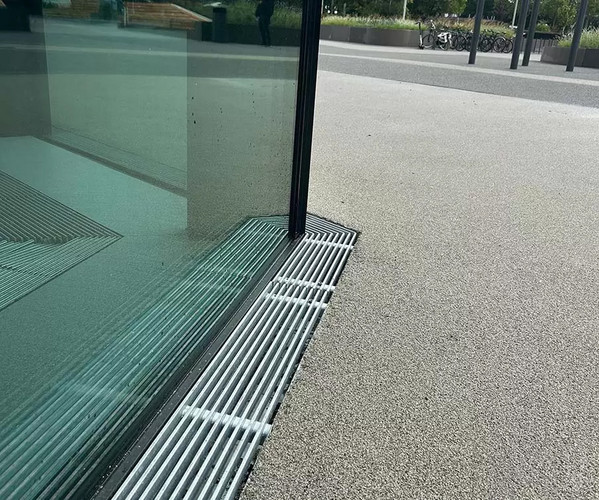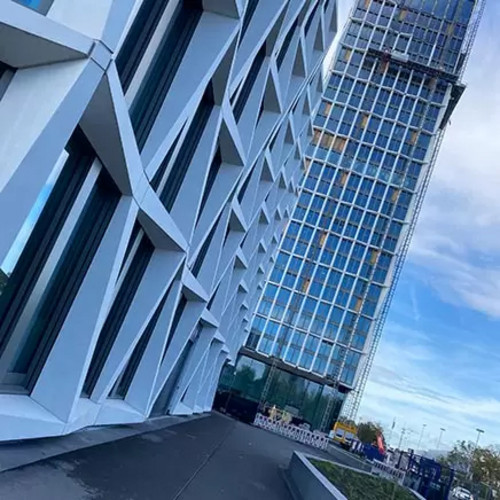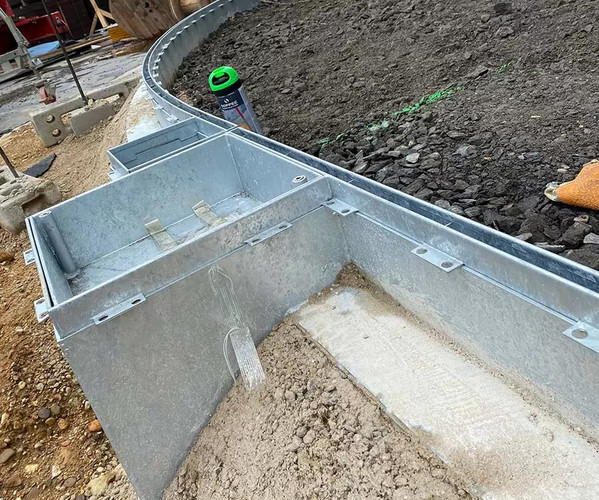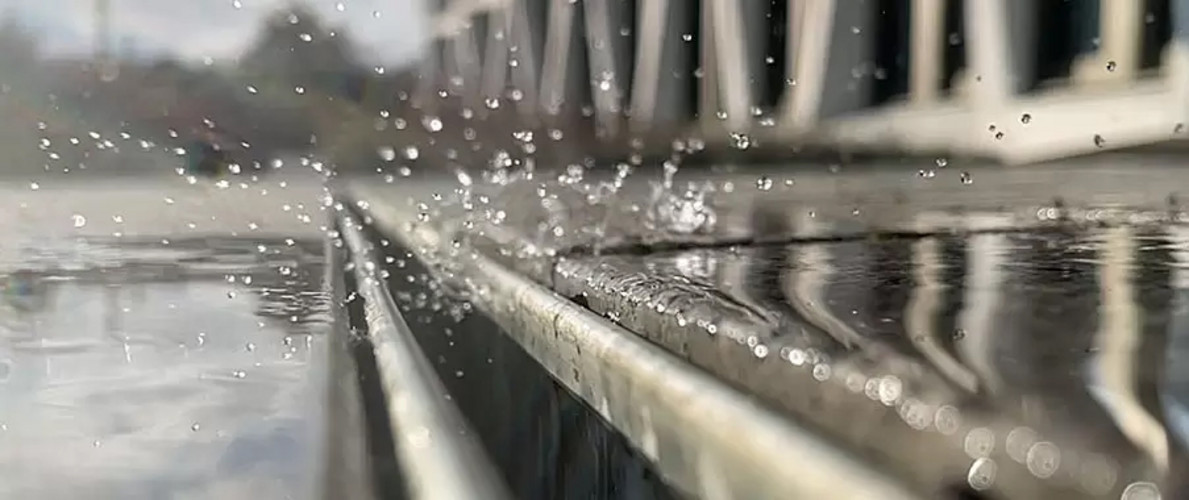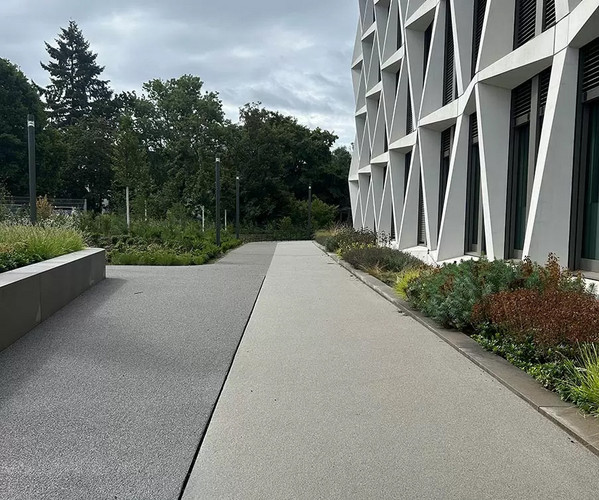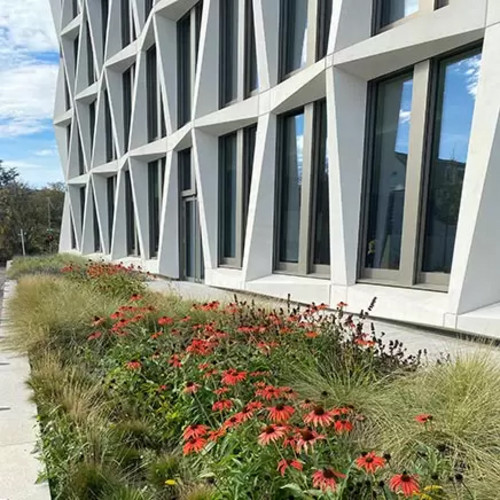Architectural Unity
In 2015, the project developer ArtInvest initiated an urban architectural competition, which was won by the Cologne-based office JSWD Architects.
To bring together the three hexagonal structures as an ensemble, JSWD chose a continuous façade motif: geometrically shaped precast concrete parts dyed white ensure a uniform appearance. In the two lower buildings, these parts are load-bearing, while in the high-rise with a pedestal, they are connected to a load-bearing reinforced concrete skeleton. Due to their dynamic shape, the façade appears to be in motion from different viewpoints and varying light conditions – one of the reasons why the project was awarded the German Design Award in 2024.
Dynamics as a Design Element
The powerful, sweeping overall concept extends not only into the foyer – where glass-fiber-reinforced concrete elements form the cladding of the ceiling and back wall – but is also evident in the exterior space planning. By positioning the structures at the apexes of the triangular site, a public open space is created in the center, which includes a mirrored artwork by Danish artist Jeppe Hein. A two-toned, organically shaped motif on the ground follows the buildings and pathways, thus expanding the dynamic concept to the entire district. The landscape architects from RMPSL developed the open-space graphics using a combination of cast and rolled asphalt, which was subsequently coated and finished with a mineral treatment.
Challenge: Sealing
For an office complex of this size, parking spaces are a necessity. Nearly the entire site is underlain by a three-story underground garage providing 950 car and 450 bicycle parking spaces. This is why the area must make do with a few green spaces and raised beds, complemented by extensive roof greening. Additionally, trees along the property's edge provide necessary screening from the residential area. Given the advancing climate change and associated extreme weather events such as heavy rain and flooding, these limitations posed a significant challenge in terms of drainage.
Prepared for Extreme Weather Events
Because the project required elaborate special solutions due to increased urban flooding risks, ACO was involved early in the planning phase. "The core task was to initially absorb and store normal and extreme amounts of rainfall, then control its release into the city's drainage system or reuse it for vegetation," explains Andreas Bauer-Idel, Project Manager at ACO. "This is the concept of blue-green infrastructure, ACO Green City."
To integrate the drainage of sealed open spaces into the design concept, distinctive ground design was utilized. "The lines wrap around the buildings in a dynamic form language," points out Markus Piel, Landscape Architect at RMPSL. "We utilized the two-tone nature and positioned slot drains at the transitions." The organic shapes created large radii, which the ACO ino 653 SR and 654 SR from ACO Inotec follow for over 70 meters. They store normal rainfall and channel it into the stormwater drain. Larger amounts of precipitation are distributed via an emergency overflow integrated into the system to retention boxes on the garage roof. Despite their low component height of just 8.5 centimeters, they were placed beneath the vegetation, yet still store 80 liters per square meter. The collected and stored water is subsequently reused and made available to green spaces and raised beds.
Reviewable and Threshold-Free
Due to the curved precast concrete parts, as well as the depth and geometry, the façade drainage also required custom fabrications. ACO tailored façade drains specifically to the architecture and in a coordinated design. Similar to the courtyard, longitudinal bar grates were used on the façade. They extend the facade's depth effect and emphasize the linear appearance of the architecture. At the corners, prefabricated components adapted to the hexagonal building geometry were used.
Thanks to the special system, the drains could be directly connected to the floor-to-ceiling façade equipped with baffle plates, ensuring minimized splashing water as per DIN standard 18533 at exits. Transitions into the buildings were made accessible and wheelchair-friendly with ACO façade drains according to DIN 18040 as a zero threshold. With welded load anchors seated in the concrete bed, the system provides additional relief to the façade in entrance and driveway areas with higher load occurrences. "A special feature," notes Andreas Bauer-Idel, "is that in case of damage, the façade can be disconnected from the drainage system by simply unscrewing and completely revised without major construction."
Interdisciplinary Development
"For this project, a total of 884 meters of façade and open space drains were installed," recalls Andreas Bauer-Idel. "The drainage system was meticulously planned. This was only possible by developing it in close collaboration from the outset." The development and implementation of climate-resilient and sustainable concepts are – as with this project – not only a necessity in the fight against the impacts of climate change but also an opportunity to make the built environment more resilient and ecologically compatible.
